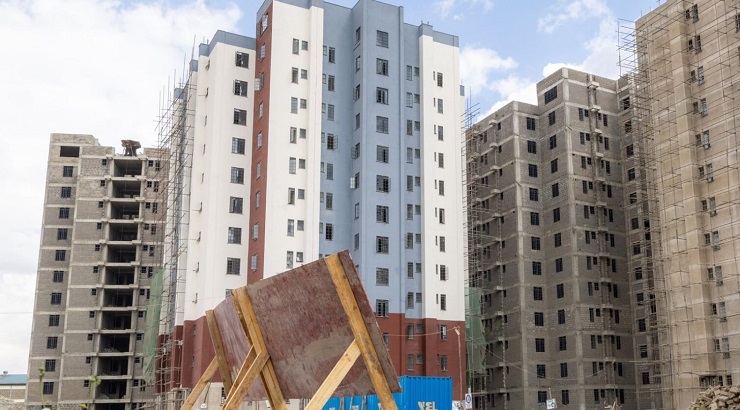Residential Projects
Mukuru Affordable Housing Handover Set for December
Bedsitters will rent for Sh3,200 per month on a 30-year rent-to-own plan.

Handover of bedsitters at the Sh7 billion Mukuru Affordable Housing Project in Nairobi is set to begin in December, the State Department for Housing and Urban Development has said.
Benjamin Njenga, Secretary for Urban and Metropolitan Development, revealed that phase one of bedsitters is at 99% completion, while phase two is at 80% and phase three is at 60%.
“The President will start giving out the units in December. We are targeting mainly Mukuru slum residents as we implement these key projects that are aimed at replacing slums across the country with decent housing units for the population,” Mr Njenga said last week.
This is part of a plan to speed up construction on the 56-acre site previously grabbed by private developers, but reclaimed by the Ethics and Anti-Corruption Commission in 2020.
The Mukuru Affordable Housing Project is the largest single housing project undertaken by the government, comprising 13,248 units. These include 5,616 bedsitters in 26 blocks, 3,024 one-bedroom units in 14 blocks, and 4,608 two-bedroom units in 48 blocks.
The bedsitters will rent for Sh3,200 per month on a 30-year rent-to-own plan. One-bedroom units will go for Sh4,000, while two-bedroom units will retail at Sh5,000 per month.
Construction at the State-backed Mukuru Affordable Housing Project is divided between three contractors: bedsitters by Vaghjiyani Enterprises Ltd, one-bedroom units by Epco Builders Ltd, and two-bedroom homes by Top Choice Surveillance Ltd.
Work on the two-bedroom units began in March, with completion expected in March 2026.
The houses are sold through the Boma Yangu platform, where one house is allocated per Identity Card. Other AHPs underway in Nairobi include Shauri Moyo, Starehe, and Soweto.
With a vision to tackle housing shortage, the government aims to construct at least 200,000 homes annually. This goal addresses the fact that 60% of urban households live in slums.
The World Bank has indicated that Kenya needs to build 250,000 housing units annually for several years to resolve a cumulative deficit of two million homes. This is worsened by a 4.4% urbanisation rate, which equates to about half a million new city dwellers each year.
“This deficit continues to rise due to fundamental constraints on both the demand and supply side,” the World Bank said in a recent economic update on Kenya.
RELATED: Inside Mombasa’s Sh19bn Affordable Housing Project
Since September last year, the government has launched 51,666 units, generating at least 168,431 jobs nationwide. With 840,622 housing units planned, the State Department anticipates the programme will create 2,738,902 jobs over the next five years.
The State has given land to builders of affordable homes in areas such as Mavoko, Vihiga, Mabera in Kuria West, Thika, Ruiru, Homa Bay, Bahati, Embu, Gichugu and Kakamega.
Other ongoing affordable housing projects include Mzizima Estate in Mombasa, Pioneer AHP, Kidiwa-Kapsuswa, Emgwen AHP, Timau Buuri, and two projects in Meru. Several projects have been completed, including Buxton in Mombasa and Bondeni AHP in Nakuru.














